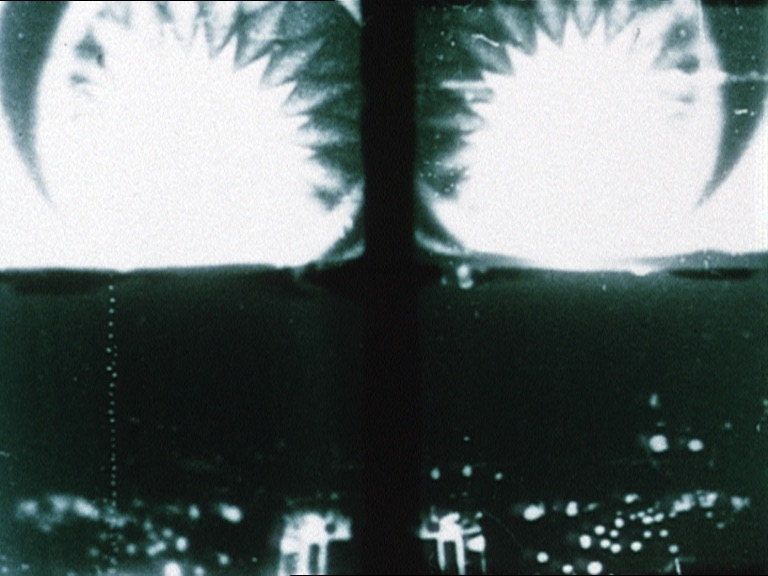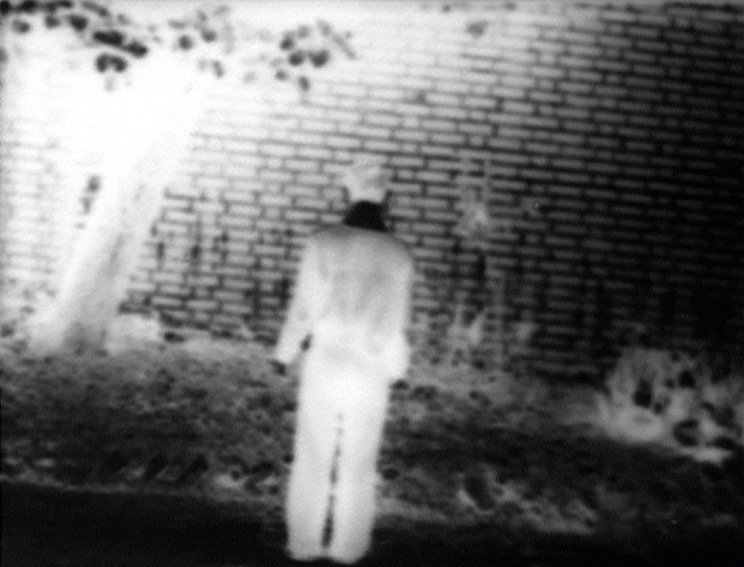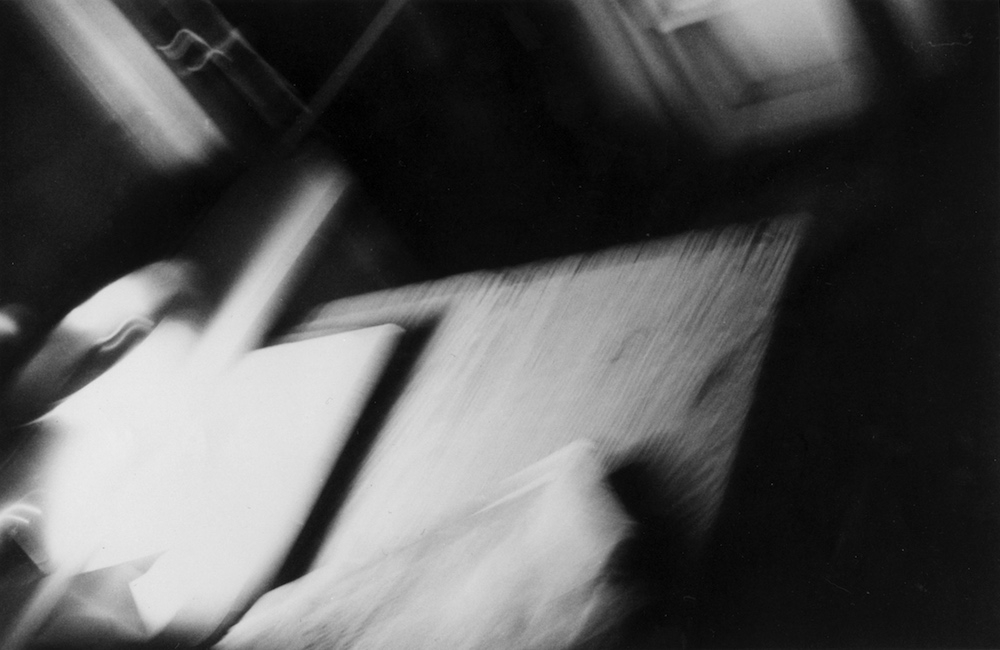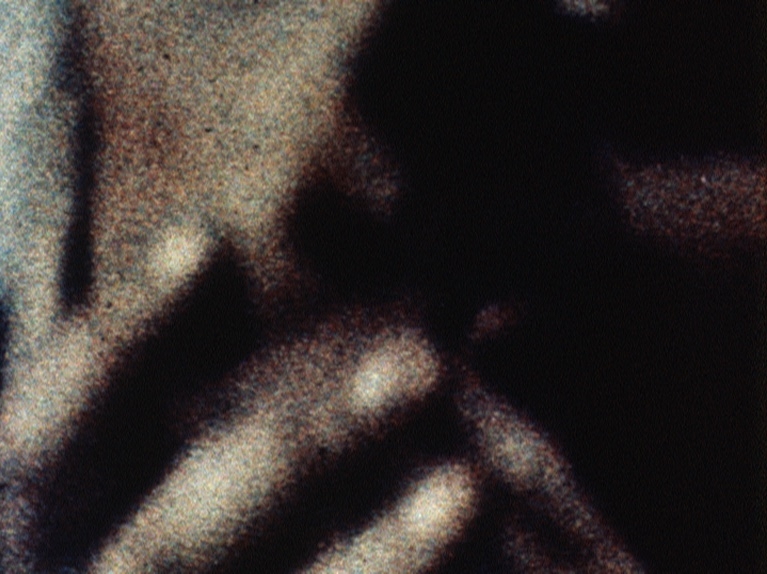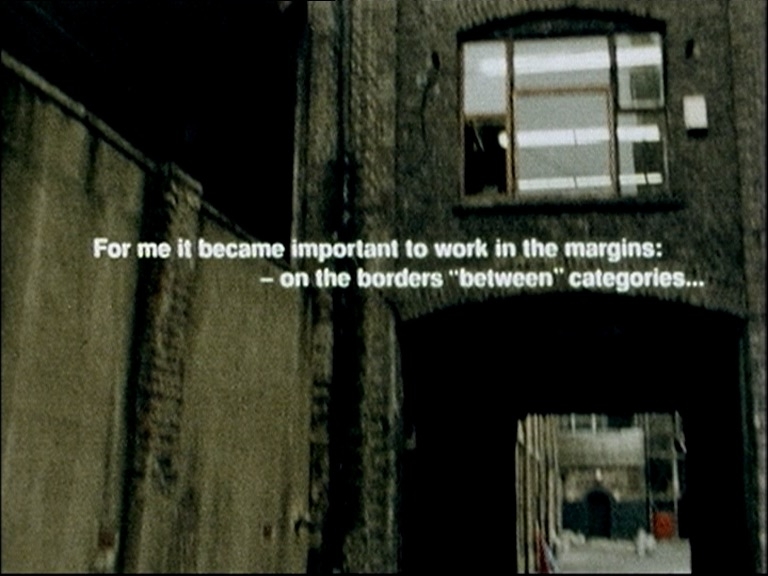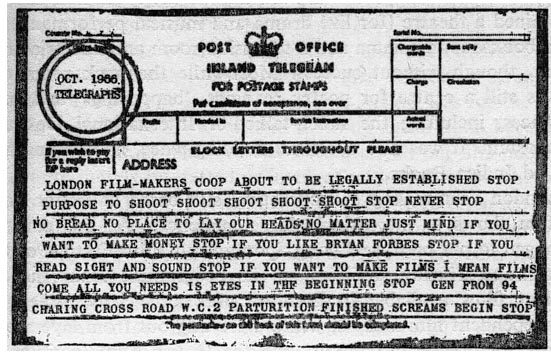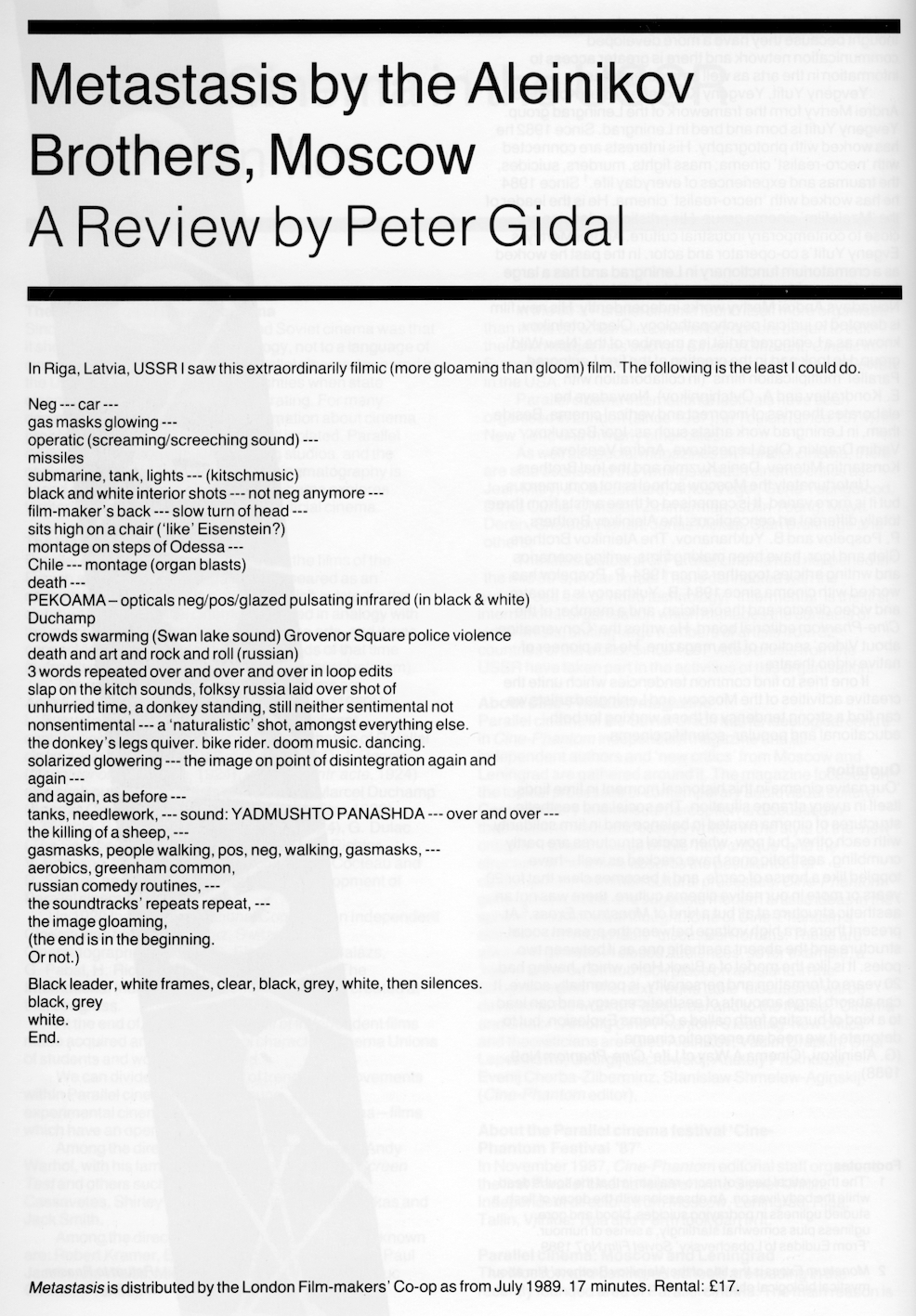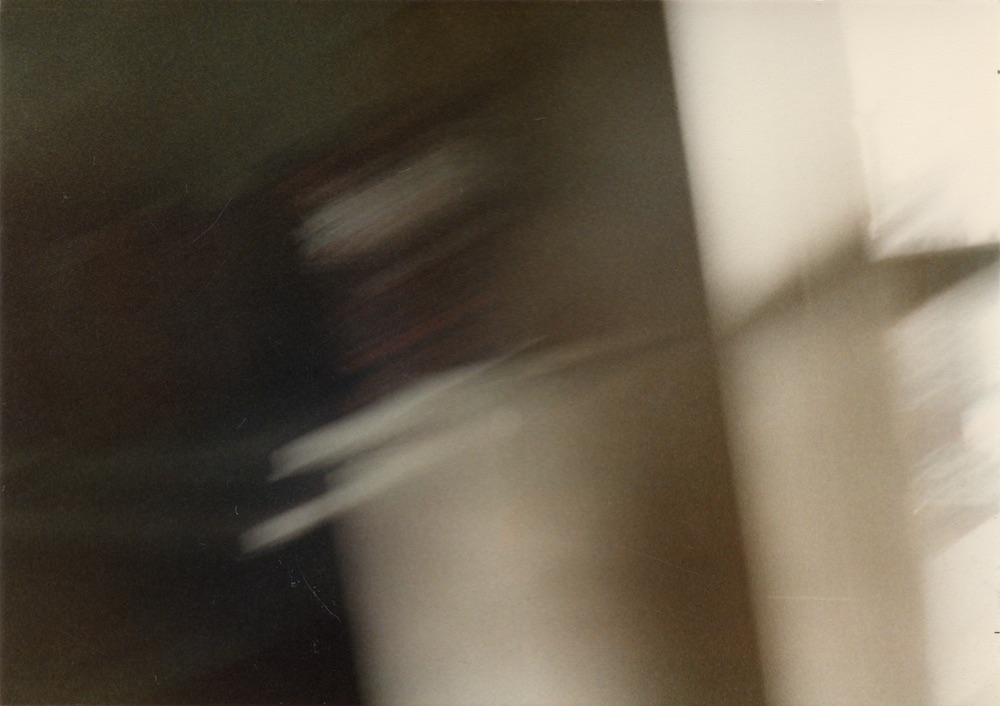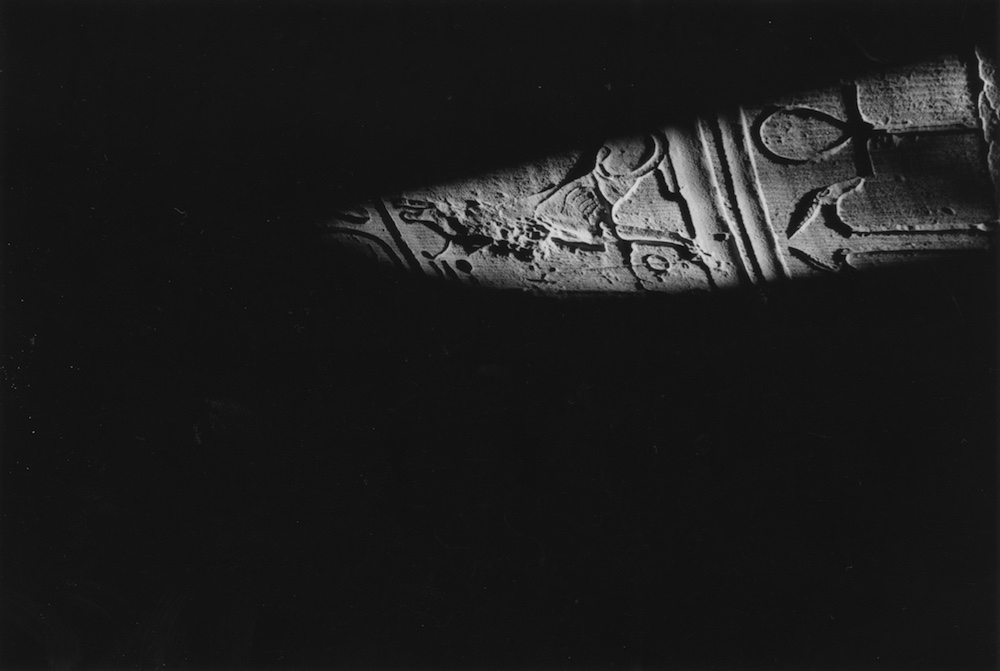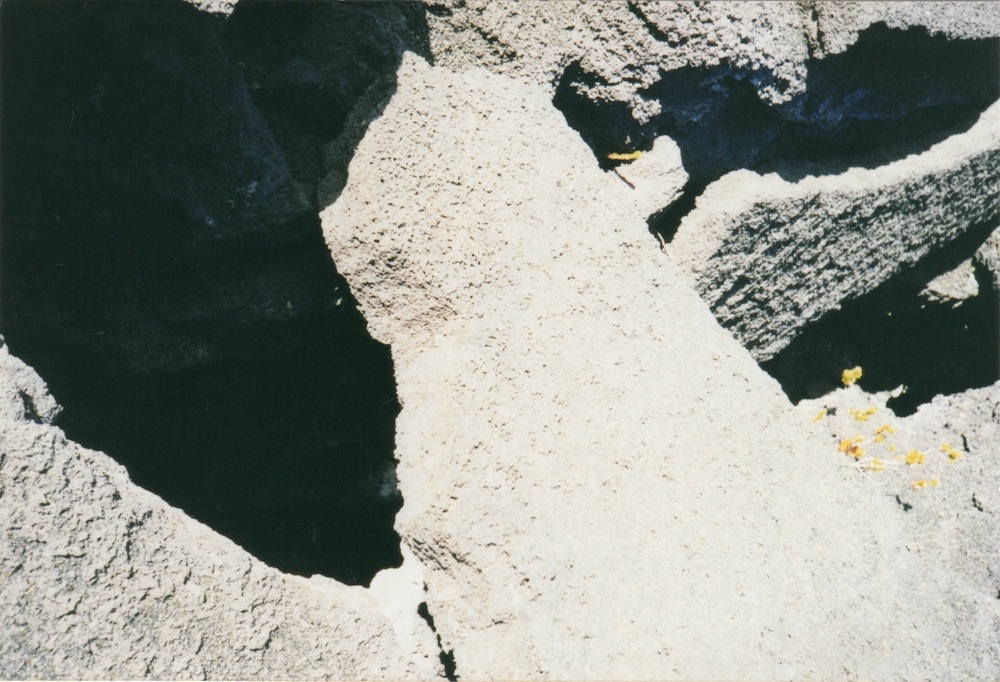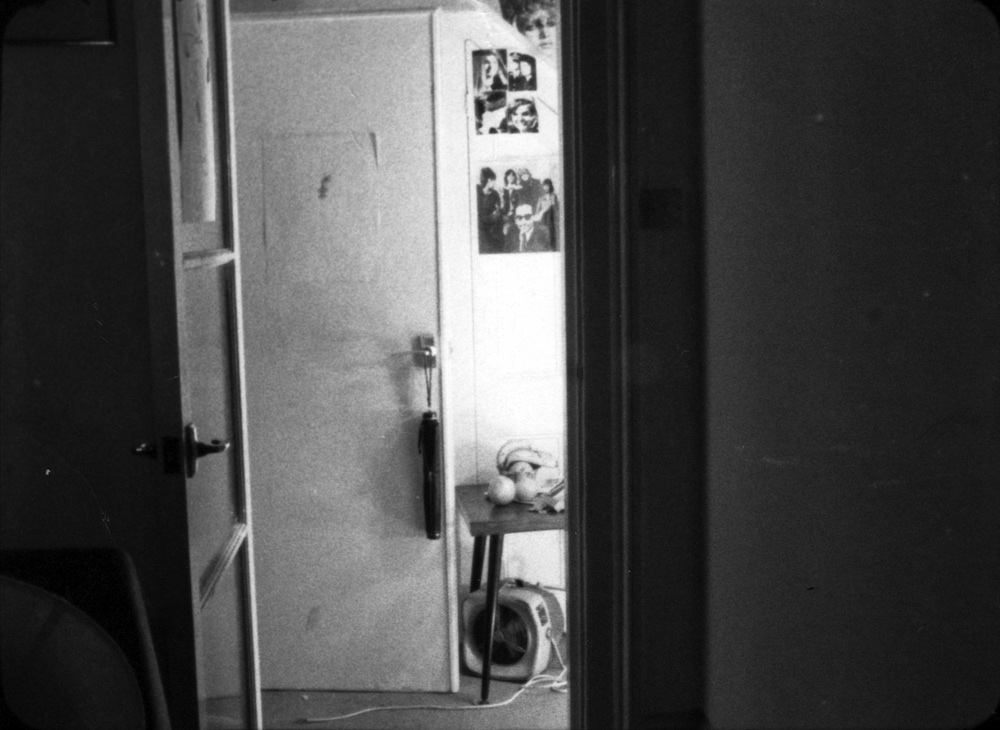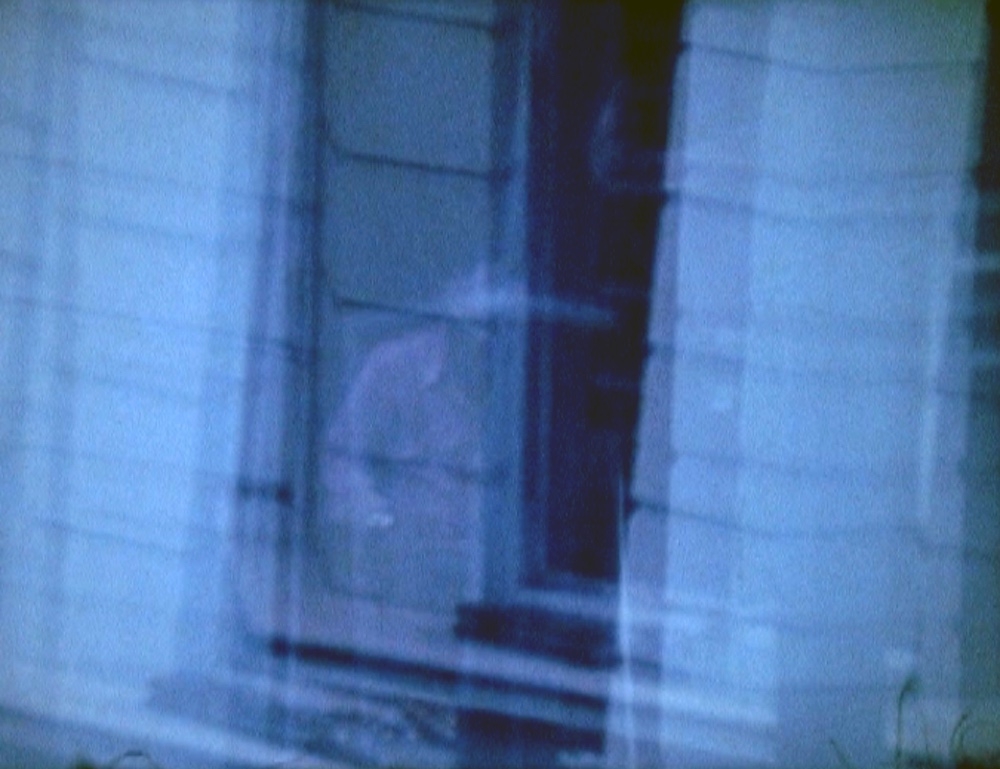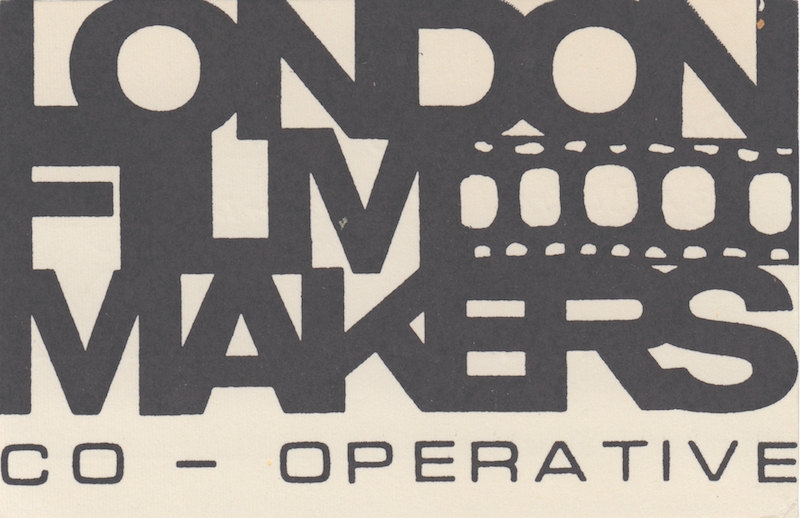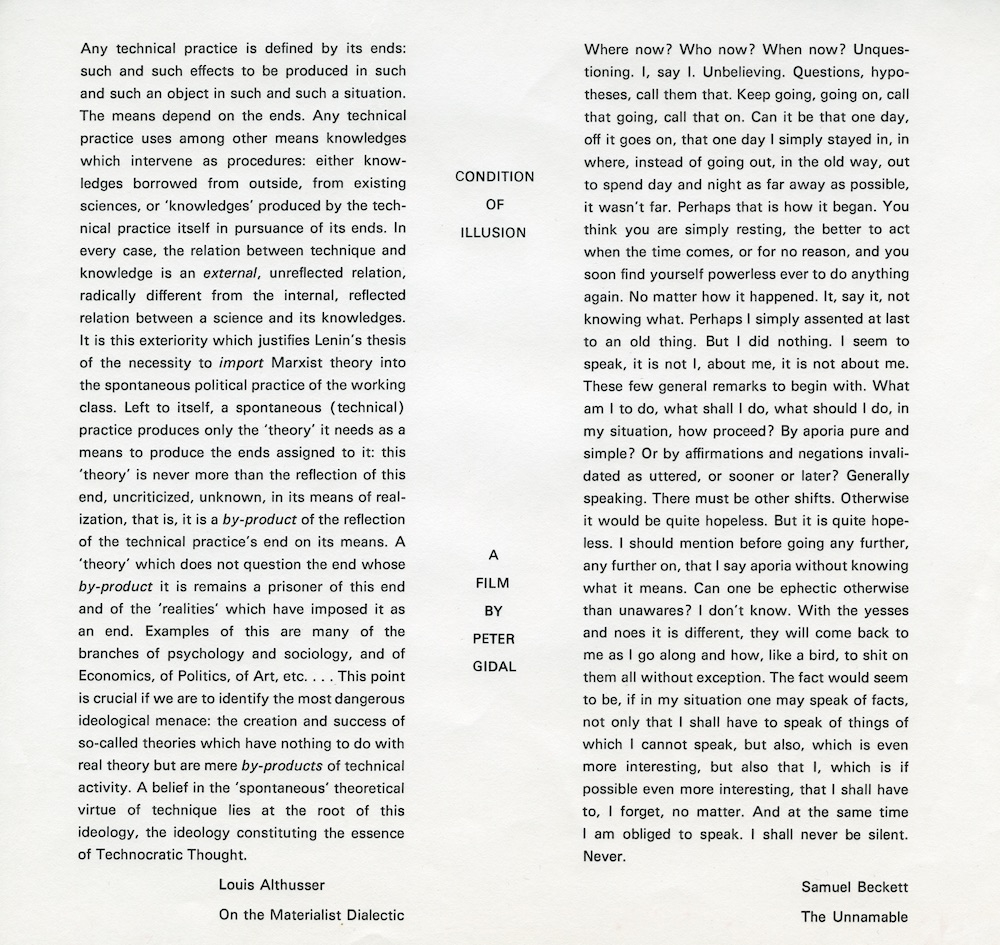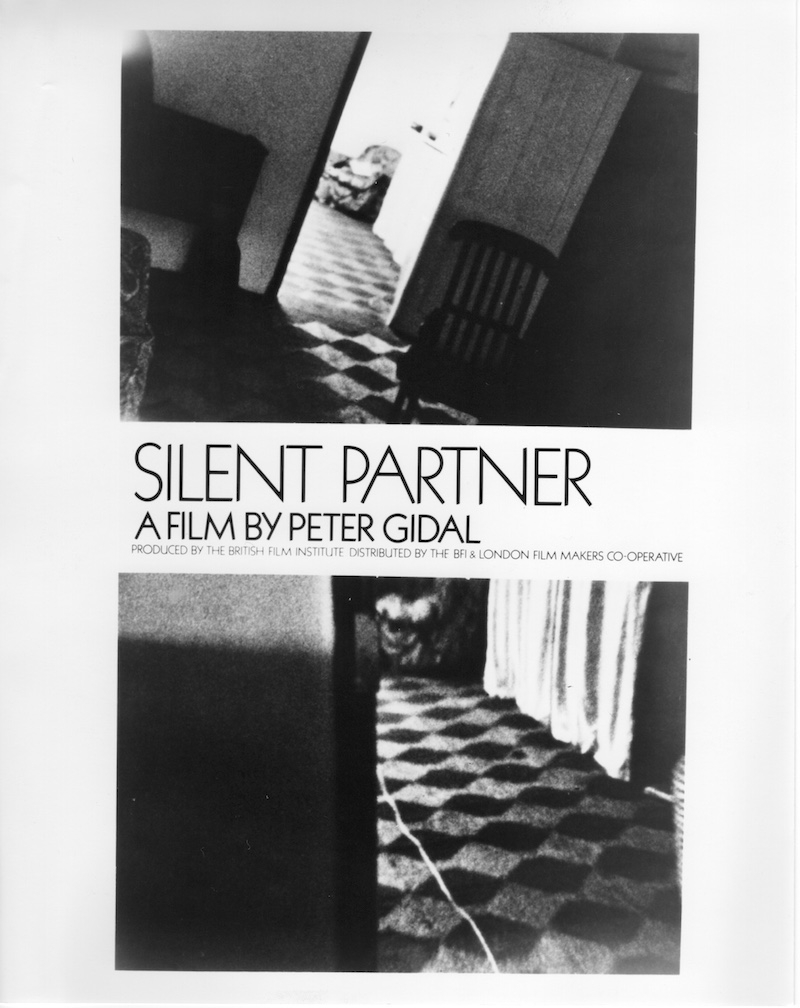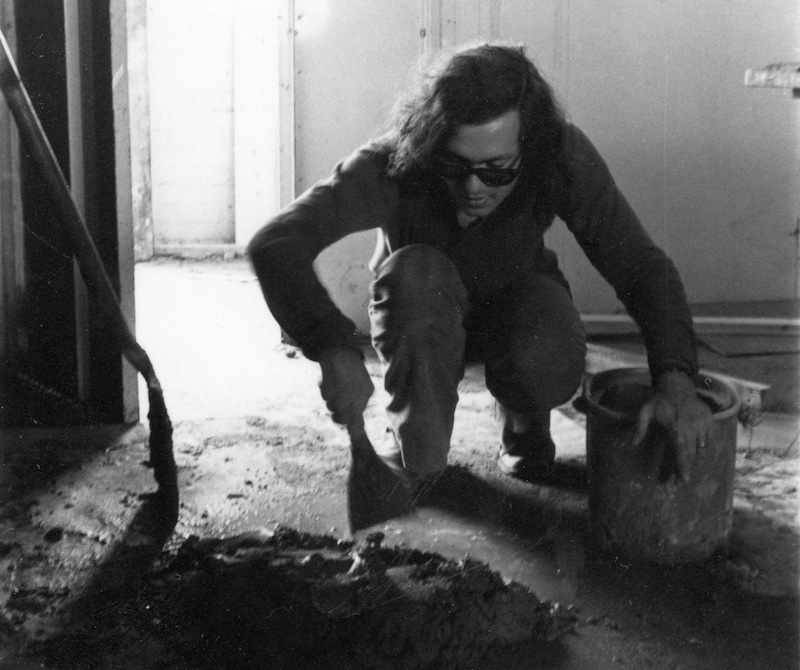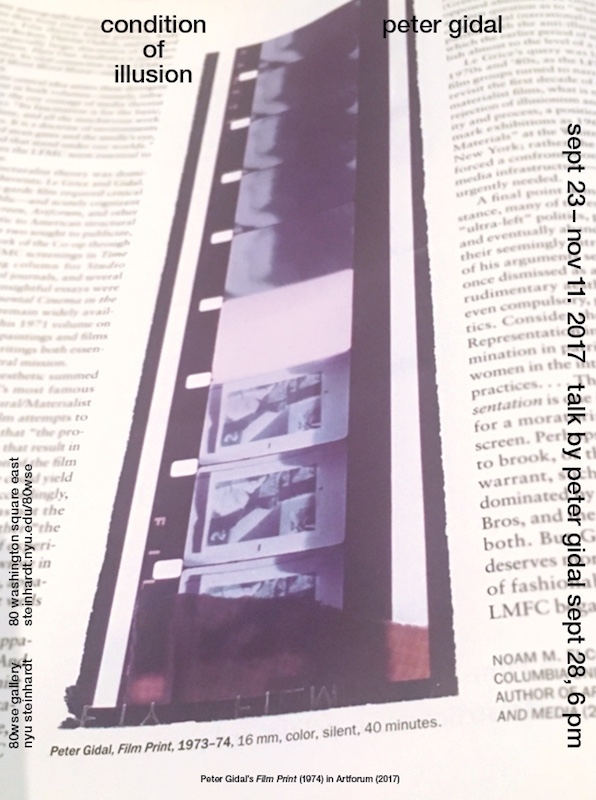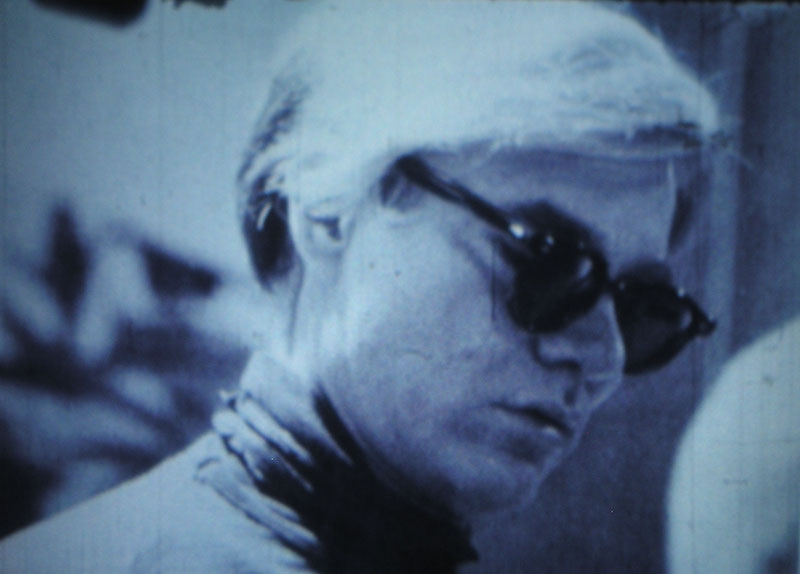Peter Gidal Events
Peter Gidal / Flare Out: Aesthetics 1966–2016
A list of screenings and events that have taken place in support of Flare Out: Aesthetics 1966–2016 is shown below. A maximum of 20 events are shown per page. Please use the monthly navigation links at the top or bottom of this list to view more recent events. Details can be expanded by using the ‘+’ symbol, and the ‘read more’ link within each event window.
23 Filmmakers: Programme One
Paul Sharits, Word Movie, 1966, 4 min
Joyce Wieland, Sailboat, 1967, 5 min
Malcolm Le Grice, Yes No Maybe Maybe Not, 1967, 8 min
Barbara Meter, From the Exterior, 1970, 7 min
Hollis Frampton, Lemon, 1969, 7 min
Michael Snow, Standard Time, 1967, 8 min
Valie Export, Adjungierte Dislokationen, 1973, 8 min
David Crosswaite, Film No. 1, 1971, 10 min
Stephen Dwoskin, Dirty, 1967, 11 min
Mike Dunford, Still Life With Pear, 1973, 14 min
Andy Warhol, Screen Tests, 1960s, 6 min
Martha Haslanger, Syntax, 1974, 13 min
The two dozen films selected are representative of the programmes we did at the London Film Co-op Cinema 1971-1974, in retrospect an astonishing array of radical 70s experimental cinema. On rainy (was it Wednesday?) nights on mattresses collected from various churches and warehouses properly cleaned, 30 to 100 people would watch around 90 minutes of experimental film at its best, international, hundreds of films by literally dozens of men and women; some famous, some infamous, most pretty much unknown at that time. There were always last minute additions and changes hastily scribbled on the sheet stuck to the entrance, or someone would mention they’d just finished a film and … but 80% of the programmes were organised and then written about in Time Out, all this apart from the open screenings … all in that cold dark red and black painted cinema, never could quite get the six big windows to shut properly. And through all this, the conventional position of the viewer was radically changed, of meaning making, of production versus consumption, of notions and inculcations of truth, beauty, and the politics of the aesthetic.
Peter Gidal
NB: Joint ticket available with programme 2: £16 / £12 concessions (members pay £1.70 less)
23 Filmmakers: Programme Two
Piero Heliczer, Dirt, 1966, 12 min
Marcel Duchamp, Anemic Cinema, 1926, 7 min
Pola Chapelle, Fishes in Screaming Water, 1969, 6 min
Marilyn Bailey, Footsteps, 1975, 7 min
William Raban, View, 1970, 4 min
Annabel Nicolson, Shapes, 1971, 11 min
John Du Cane, Lenseless, 1971, 5 min
Kurt Kren, 3/60 Bäume Im Herbst, 1960, 5 min
Peter Gidal, C/O/N/S/T/R/U/C/T/, 1974, 13 min
Lis Rhodes, Dresden Dynamo, 1972, 5 min
Gill Eatherley, Lens and Mirror Film, 1973, 3 min
The two dozen films selected are representative of the programmes we did at the London Film Co-op Cinema 1971-1974, in retrospect an astonishing array of radical 70s experimental cinema. On rainy (was it Wednesday?) nights on mattresses collected from various churches and warehouses properly cleaned, 30 to 100 people would watch around 90 minutes of experimental film at its best, international, hundreds of films by literally dozens of men and women; some famous, some infamous, most pretty much unknown at that time. There were always last minute additions and changes hastily scribbled on the sheet stuck to the entrance, or someone would mention they’d just finished a film and … but 80% of the programmes were organised and then written about in Time Out, all this apart from the open screenings … all in that cold dark red and black painted cinema, never could quite get the six big windows to shut properly. And through all this, the conventional position of the viewer was radically changed, of meaning making, of production versus consumption, of notions and inculcations of truth, beauty, and the politics of the aesthetic.
Peter Gidal
NB: Joint ticket available with programme 1: £16 / £12 concessions (members pay £1.70 less)
Peter Gidal: Close Up at AV Festival, Newcastle
Peter Gidal, Close Up, 1983, 70 min
Introduced by Mark Webber
This rare screening of Peter Gidal’s ‘feature length’ film Close Up anticipates the publication of Flare Out: Aesthetics 1966–2016, a collection of essays by one of film’s great polemicists. Gidal was a central figure during the formative years of the London Film-Makers’ Co-operative, whose 50th anniversary is being celebrated throughout 2016, and made some its most radical works. His cinema is anti-narrative, against representation and fiercely materialist. In Close Up, Gidal’s political, ultra-leftist practice is augmented by the disembodied voices of Nicaraguan revolutionaries heard on the soundtrack.
Presented by the AV Festival 2016 as part of Resistance: British Documentary Film, more information about all the films in the series here.
Shoot Shoot Shoot
An afternoon of screenings celebrating the first decade of the London Film-Makers’ Co-operative (1966–76), the predecessor of LUX. The LFMC was founded in October 1966 as a non-commercial distributor of avant-garde cinema. In contrast to similar groups that emerged around the world, it grew to incorporate a distribution service, cinema space and film laboratory. Within this unique facility, filmmakers were able to control every aspect of the creative process. Many explored the material aspects of celluloid, whilst others experimented with multiple projection and performance-based ‘expanded cinema’. Despite the physical hardship of its survival, this artist-led organisation asserted the significance of British work internationally, and anticipated today’s vibrant culture of artists’ moving image. The early history of the LFMC will be documented in a display of films and ephemera in the Archive Gallery at Tate Britain (25 April to 17 July 2016), and a book will be published by LUX this autumn.
3pm
Guy Sherwin, At The Academy, 1974, 5 min
Marilyn Halford, Footsteps, 1974, 6 min
Peter Gidal, Key, 1968, 10 min
Annabel Nicolson, Slides, 1970, 12 min (18fps)
Malcolm Le Grice, Berlin Horse, 1970, 8 min
Lis Rhodes, Dresden Dynamo, 1974, 5 min
Chris Garratt, Romantic Italy, 1975, 8 min
John Smith, Associations, 1975, 7 min
5pm
William Raban & Chris Welsby, River Yar, 1971–72, 35 min (double screen projection)
Curated and presented by Mark Webber. Screenings are free to attend, but please register via Eventbrite.
Peter Gidal: Flare Out – Screening & Book Launch
Peter Gidal, Assumption, 1997, 1 min
Peter Gidal, Key, 1968-69, 10 min
Peter Gidal, Kopenhagen/1930, 1977, 40 min
Peter Gidal, not far at all, 2013, 15 min
Introduced by Peter Gidal and Mark Webber
A screening of four films by Peter Gidal to celebrate the publication of Flare Out: Aesthetics 1966–2016, a collection of his essays on film, art and aesthetics. Gidal was a central figure during the formative years of the London Film-Makers’ Co-op and made some its most radical works. His cinema is anti-narrative, against representation and fiercely materialist, and his writings are similarly polemical and unique. This programme of films from the 1960s to the present includes his most recent work, and will be followed by a discussion with Peter Gidal.
“He draws out singularities. He allows the camera only a fenced in area, piecemeal. He lets the gaze hold on objects and constantly repeats … this permits the possibilities of the discrepancies between one’s own seeing and seeing with the camera to become distinct, and this in turn allows for a completely different experience of the surroundings.” (Birgit Hein)
Flare Out: Aesthetics 1966–2016, edited by Mark Webber and Peter Gidal, is published by The Visible Press. www.thevisiblepress.com
Assumption
Peter Gidal, 1997, 16mm, colour, sound, 1 minute
Assumption features glimpses of life at the London Film-Makers’ Co-op; but is more than a potted history of an organisation. It pays tribute to Mary Pat Leece, a founding member of Four Corners Film Workshop and a teacher at Chelsea and Saint Martins Schools of Art, one of the true innovators of the independent film sector. With its virtuoso editing, voice-overs and scrolling titles, it works as a densely-plotted celebration of independent film culture at the end of the 1990s.
Key
Peter Gidal, 1968-69, 16mm, colour, sound, 10 minutes
A slow zoom-out and image dissolve (defocus) of … (+feedback sound).
Kopenhagen/1930
Peter Gidal, 1977, 16mm, b/w, silent, 40 minutes
Kopenhagen/1930 presents a different attitude to the seductions of content, to the signifying processes that are repressed in the rigorous procedures of the Structural/Materialist film. Its material is ‘images by George Gidal, Copenhagen 1930’: photographs, their grounding and their signification.
not far at all
Peter Gidal, 2013, 16mm, colour, sound, 15 minutes
First film in 5 years, tempted to say different yet the same, but not. not far at all’s soundtrack, just for the record, is concrete/abstract without language.
Shoot Shoot Shoot: The London Film-Makers’ Co-operative 1966–1976
This exhibition traces the first decade of the London Film-Makers’ Co-operative through a selection of documents, ephemera and films from the period. The LFMC was founded in October 1966 as a non-commercial distributor of avant-garde cinema. In contrast to similar groups that emerged around the world, it grew to incorporate a distribution service, cinema space and film laboratory. Within this unique facility, filmmakers were able to control every aspect of the creative process. Many explored the material aspects of celluloid, whilst others experimented with multiple projection and performance-based ‘expanded cinema’. Despite the physical hardship of its survival, this artist-led organisation asserted the significance of British work internationally, and contributed towards today’s vibrant culture of artists’ moving image.
Curated by Mark Webber. Presented by LUX in association with the British Artists’ Film and Video Study Collection.
The book “Shoot Shoot Shoot: The First Decade of the London Film-Makers’ Co-operative & British Avant-Garde Film 1966-76” will be published by LUX in October 2016.
Writing, ‘Undercut’ and the London Filmmakers’ Co-operative
A discussion around the London Filmmakers’ Co-operative, focussing on one of the key publications to emerge from it, Undercut (1981-1990). Published by a collective of filmmakers, artists, critics and writers, Undercut provided a unique platform for the debates and practices of experimental film and video throughout the 1980s. Chaired by Kathryn Siegel (King’s College London), our panel includes filmmakers Peter Gidal, Nina Danino, and artist / curator Michael Maziere.
Flare Out: Aesthetics 1966–2016, edited by Mark Webber and Peter Gidal, is published by The Visible Press. www.thevisiblepress.com
Struggles with Apprehension: Films by Peter Gidal
Peter Gidal, Assumption, 1997, 1 min
Peter Gidal, Room Film 1973, 1973, 46 min
Peter Gidal, Key, 1968-69, 10 min
“I try to make films where each image, each object, is never given the hold of any recognition. Not to reproduce the given as given, to see each image, each object, each imaginary space-time narrative as imaginary projection, so that nothing takes on the status of truth. The lack of recognition … can force the construction of all representational motives as constructions, as artifice, as unnatural, as ideology, so that representation is always impossible.” (Peter Gidal)
The Visible Press’ recent publication of a collection of Peter Gidal’s essays, Flare Out: Aesthetics 1966-2016 (available in the TIFF Shop), offers a welcome occasion to take another look at the British artist’s body of work. In contrast to the North American conception of Structural filmmaking practiced by Michael Snow, Hollis Frampton et al — where the reduction of cinema to formal techniques (zooms, constrained sets of images, etc.) could function as metaphors for consciousness — Gidal argued for a Marxist-inspired “Structural/Materialist” filmmaking, wherein those techniques will aid in our “unlearning” of the ideological assumptions behind such metaphors. Contending that cinematic illusionism bred passivity and capitulation to dominant forms, Gidal viewed Structuralist/Materialist film as a political strike not only against cinematic narrative, but against representation itself — a theory and practice that has attracted such acolytes as Cerith Wyn Evans (once a student of Gidal’s), Nicky Hamlyn and Emily Wardill. For Gidal, however, denial of representation is not the same thing as the denial of beauty, and his films can be richly rewarding in their evocations of the tactility of experience.
Made at the high point of the development of Gidal’s controversial ideas, Room Film 1973 belies the sweeping tone of its author’s polemics by literally being confined to a single room. Comprised of lumbering patterns of short shots, reprinted optically to enhance the grain and the colour, Room Film 1973 is experientially equivalent to groping around with a flashlight, trying to make sense of a liminal space where shadow and form intermix. The result is strangely beautiful, a profound questioning of the vision that we so often take for granted. (Michael Snow said of the film that “I felt as if my father made it, as if it were made by a blind man. I liked the tentativeness … one had to work at it, that searching tentative quality, that quality of trying to see.”)
Room Film 1973 is paired with two short pieces that take different tacks in their questioning of the cinematic image. Assumption — a tribute to the then recently deceased filmmaker Mary Pat Leece and the old London Film Makers’ Cooperative (of which Gidal was a central figure, and which celebrates its 50th anniversary this year) — is a condensed, one-minute film that depicts the operations of memory as a collision of images, text, and sounds. Key centres on a photograph of Nico (Gidal frequently wrote on Warhol’s work) which Gidal abstracts beyond recognition through a zoom, legibility never fully resolving beyond a dazzling canvas of pointillist colours.
Chris Kennedy
Peter Gidal: Close Up at Close Up
Peter Gidal, Close Up, 1983, 70 min
Introduced by Mark Webber and Peter Gidal
“Close Up is crystal hard, intransigent, and film in extremis. In short, one of the best ‘political’ films made in this country.”
(Michael O’Pray, Monthly Film Bulletin)
A rare screening of Peter Gidal’s ‘feature length’ film Close Up (1983) to coincide with the publication of Flare Out: Aesthetics 1966–2016, a collection of essays by one of film’s great polemicists. Gidal was a central figure during the formative years of the London Film-Makers’ Co-operative and made some its most radical works. His cinema is anti-narrative, against representation, and fiercely materialist.
In Close Up, Gidal’s political, ultra-leftist practice is augmented by the disembodied voices of two Nicaraguan revolutionaries heard on the soundtrack. These voices punctuate a film whose representation of a room, an inhabited space, is one in which the viewer must consciously search for recognition, for meaning-making. The image-content is muted and abstract, but continually fascinating, with moments of (no-doubt) inadvertent beauty.
Presented in association with LUX. Flare Out: Aesthetics 1966–2016, edited by Mark Webber and Peter Gidal, is available now from The Visible Press, and will be on sale at the screening.
…
Close Up
Peter Gidal, 1983, 16mm, colour, sound, 70 minutes
“After three years, this film attempts yet again to deal with the problematizing of filmic representation in sound and image: the overtly politically-polemical soundtrack from Nicaragua must not synchronise with, nor must it find a separate continuum of reality away from, the image sequences.
“Without avoiding the interrogation of narrative/anti-narrative cinematic structures (the way the images, and the sounds, at times hold/do not hold … or the way they attempt to force a position contradictory to any representational imaginary or homogeneity, of constructed space, time, ego, language, film) an attempted materialist use of sound and image must be at the same time an anti-individualist work.
“Both the sound-contradictions, and the image-contradictions, of subjectivity in this film (and of this film) must be in constant process with/against the political polemic: the film can not allow for a final exclusion of either (neither some pure documentary reality nor some pure formal dialectic). The viewer’s attempts, via her/his/the cultural context of meaning making (political/sexual/narrative) are worked against by the film’s process. The work against the capitalist patriarchal position of narrative, in other words, is (still, and in specificity) the main interest.”
Peter Gidal, August 1983
Peter Gidal: Flare Out
Peter Gidal, Clouds, 1969, 10 min
Peter Gidal, Flare Out, 1992, 20 min
Peter Gidal, Volcano, 2002, 30 min
Peter Gidal, not far at all, 2013, 15 min
“Mental activation toward material analysis is the process that is relevant, whether or not actual structure is ‘revealed’.” (Peter Gidal, 1969)
For five decades, Peter Gidal has sought to problematise the film-viewing process by creating works that resist recognition and identification. His practice posits film as a durational experience and negates analysis on psychological grounds. This programme, featuring the seminal film Clouds (1969) and later works Flare Out (1992), Volcano (2002) and not far at all (2013), surveys his radical and unique approach.
Gidal has been based in the UK since the late 1960s, and was a central figure during the formative years of the London Film-Makers’ Co-operative. He is a noted writer and polemicist, whose “Theory and Definition of Structural/Materialist Film” is a key text of avant-garde cinema. The screening celebrates the publication of “Flare Out: Aesthetics 1966–2016”, a collection of Gidal’s essays on film, art and aesthetics, and will be introduced by the filmmaker and editor/publisher Mark Webber.
Flare Out: Aesthetics 1966–2016, edited by Mark Webber and Peter Gidal, is published by The Visible Press.
Clouds
Peter Gidal, 1969, 16mm, b/w, sound, 10 minutes
The anti-illusionist project engaged by Clouds is that of dialectical materialism. There is virtually nothing on screen, in the sense of in screen. Obsessive repetition as materialist practice not psychoanalytical indulgence. (PG)
Flare Out
Peter Gidal, 1992, 16mm, colour, sound, 20 minutes
Sound: unrecognition unidentified, in time, you hear? Image: recognition identified, out of time in time; not not knowing the unknown but not knowing the known, no trace of ‘no trace of any thing’. e.g. grain: is grain silver, black & white, or colour? Is silver black & white or colour? You see? (PG)
Volcano
Peter Gidal, 2002, 16mm, b/w & colour, silent, 30 minutes
The film attempts to deal with those questions of representation that persist as problematic, for me, for the basic questions of aesthetics, what it is to view, how to view the unknown, as to view the known is not possibly a viewing. The question of recognition, the impossibility of recognition or, better said, the impossibility of a viewer viewing at all if it is predicated upon recognition … At that moment, you the viewer I the viewer am no longer part of a process, a material however metaphysical or not process of making meaning through the conflicts of perception of something … In Volcano light’s afterimage, the shot of light after image, becomes as obliterative as dark’s … Thereby the temporal break caused by transparent leader, and by black leader, becomes differently spatial and temporal, as to the “something missing”… (PG)
not far at all
Peter Gidal, 2013, 16mm, colour, sound, 15 minute
First film in 5 years, tempted to say different yet the same, but not. not far at all’s soundtrack, just for the record, is concrete/abstract without language. (PG)
Introduction to Peter Gidal: 1
Peter Gidal, Clouds, 1969, 10 min
Peter Gidal, Flare Out, 1992, 20 min
Peter Gidal, Volcano, 2002, 30 min
Peter Gidal, not far at all, 2013, 15 min
Introduced by Peter Gidal and Mark Webber
From his first period (Clouds, 1969) to his latest film (not far at all), through Flare Out, the 1992 film that gives the recent book from The Visible Press its title, Gidal frames empty skies and a volcano to question, by the means of film, what the viewer believes he sees and “[to pose] the basic questions of aesthetics, what it is to view, how to view the unknown as to view the known is not possibly a viewing.”
Olivier Dekegel
Introduction to Peter Gidal: 2
Peter Gidal, Hall, 1968-69, 10 min
Peter Gidal, Key, 1968-69, 10 min
Peter Gidal, Room Film 1973, 1973, 46 min (at 18fps)
Introduced by Peter Gidal and Mark Webber
Two short and one medium length film from Peter Gidal’s first period. A very famous folk singer of the time is invoked, incognito (Key) but – above all – many elements of the film language (editing and jump-cut, repetition, duration, zoom, focus, blur, etc.) are used to question film, and our gaze. Jonas Mekas was an admirer of Room Film 1973: “I was particularly impressed with Gidal’s film, which from what I’ve seen may be his best to date. Very subtly and very plastically it deals with light. The film is uncompromisingly rigid in its minimality of action. A very beautifully realised piece of work […] It is denitely contemporary in feeling and substance. It is one of the best lms to come out of the London School.”
Olivier Dekegel
Introduction to Peter Gidal: 3
Peter Gidal, Assumption, 1997, 1 min
Peter Gidal, Epilogue, 1978, 9 min
Peter Gidal, C/O/N/S/T/R/U/C/T, 1974/2016, 13 min
Peter Gidal, Condition of Illusion, 1975, 30 min
Peter Gidal, Coda I, 2013, 2 min
Peter Gidal, Coda II, 2013, 2 min
Introduced by Mark Webber
From C/O/N/S/T/R/U/C/T, shown in Knokke, to the diptych Coda I + Coda II in 2013, in which the filmmaker uses a recording of the voice of William Burroughs, we get an overview of Gidals structural/materialist cinema, that refuses a ‘subject-centred image’ and is resolutely ‘anti-voyeuristic’. As for Assumption, it offers an approach to life at the London Film-Makers’ Co-op which goes beyond the history of an organisation and includes a tribute to Mary P. Leece, founder of the Four Corners film workshop.
Olivier Dekegel
Please Note: This programme will be repeated on Monday 10 October 2016, at 6:00pm
Frieze Video, ICA Artists’ Film Club and LUX present
Soft Floor, Hard Film: 50 Years of the London Film-Makers’ Co-op
The London Film-Makers’ Co-operative (LFMC) started life at Better Books, a counter-culture bookshop on Charing Cross Road, where a group led by poet Bob Cobbing and filmmakers Stephen Dwoskin and Jeff Keen met to screen films. Initially inspired by the activities of the New American Cinema Group in New York, the London Co-op grew into a pioneering organisation that incorporated a film workshop, cinema space and distribution office.
The LFMC played a crucial role in establishing moving image as an art form in the UK and internationally. Malcolm Le Grice, Peter Gidal, Annabel Nicolson and Lis Rhodes were among its active members in the 1960s and ’70s, and later associates included John Akomfrah, Derek Jarman and Isaac Julien. Through the work of LUX, which continues to manage its distribution collection, the radical, inventive and varied output of the LFMC continues to influence artists and filmmakers today.
On the 50th anniversary–to the day–of the LFMC’s formation, Frieze Video presents Soft Floor, Hard Film, a short video about the organisation produced in collaboration with artist and writer Matthew Noel-Tod, who will chair a discussion with former LFMC members on its early ideals and ongoing legacy.
The event also marks the launch of a new book, published by LUX and edited by Mark Webber. Shoot Shoot Shoot: The First Decade of the London Film-Makers’ Co-operative 1966–76 brings together texts, interviews, images and archival documents, and includes newly commissioned essays by Mark Webber, Kathryn Siegel & Federico Windhausen.
Peter Gidal: Flare Out: Program 1
Peter Gidal, Hall, 1969, 10 min
Peter Gidal, Condition of Illusion, 1975, 30 min
Peter Gidal, Flare Out, 1992, 20 min
Peter Gidal, Coda I, 2013, 2 min
Peter Gidal, Coda II, 2013, 2 min
Introduced by Mark Webber
“Manipulation of response and awareness thereof: through repetition and duration of image. Film situation as structured, as recorrective mechanism.” (Peter Gidal, 1969)
The early film Hall presents a fixed view across a space of indeterminate depth that is continually disrupted by jump cuts and repeats. Despite the incessant ringing of (what may be) a doorbell, it is one of Gidal’s more accessible works. By the mid-1970s, the profilmic event had been entirely thrown into question. Variations in camera movement, lighting, exposure, focus, zooms, shot duration, repetition, and filming from photographs (rather than ‘reality’) were established as methods through which identification of/with an image could be negated. In Condition of Illusion the image remains unstable until the final section, a scrolling text with extended quotes from Althusser and Beckett. Other works do not contain similarly readable content: Flare Out is “out of time in time; not not knowing the unknown but not knowing the known, no trace of ‘no trace of any thing’,” the Codas (commissioned by Frieze, snatches of Burroughs on the soundtrack), “a complex of barely visible cuts in space and time, the opposite of erasure, but nothing so much as visible.”
Mark Webber
Peter Gidal: Flare Out: Program 2
Peter Gidal, Assumption, 1997, 1 min
Peter Gidal, Clouds, 1969, 10 min
Peter Gidal, Silent Partner, 1977, 35 min
Peter Gidal, Epilogue, 1978, 7 min
Peter Gidal, not far at all, 2013, 15 min
Introduced by Mark Webber
“Mental activation toward material analysis is the process that is relevant, whether or not actual structure is ‘revealed’.” (Peter Gidal, 1969)
Clouds was the first real manifestation of Gidal’s anti-illusionist project, a film in which “There is virtually nothing on screen, in the sense of in screen. Obsessive repetition as materialist practice not psychoanalytical indulgence.” Assumption is, by stark contrast, exhilarating viewing. One of the densest minutes of all cinema, the screen bristles with recognizable images, fleeting texts and snatches of dialogue in tribute to filmmaker/activist Mary Pat Leece. Silent Partner and Epilogue return to the more familiar territory of domestic interiors, inhabited spaces interrogated by a restless camera. Anti-narrative, against representation, militant and uncompromising, yet despite themselves, strangely compelling. After a hiatus from filmmaking, Gidal returned in 2013 with not far at all: “tempted to say different yet the same, but not.” The film was awarded the L’age d’or Prize at the Brussels Cinematek in 2015.
Mark Webber
Peter Gidal: Condition of Illusion
22 September to 11 November 2017
80WSE Gallery, NYU Steinhart School
80 Washington Sq East, New York, NY 10003, USA
Free and open to the public on Tuesday-Saturday, from 11-6pm.
Condition of Illusion is Peter Gidal’s first solo exhibition (British b. 1946). An important theorist and writer, as well as a filmmaker since the late 1960s, Gidal’s work has been shown around the world including cinematic retrospectives at the Institute of Contemporary Arts in London in 1983, Paris’ Centre Pompidou in 1996 and 2015, as well as at Docpoint, Helsinki and at the Cinematek, Brussels in 2016.
Gidal has been one of the main proponents of Structural/Materialist Film and has long been associated with the London Film-Makers’ Co-operative (LFMC), which was founded in 1966 as an independent filmmaking organization. The LFMC’s formation was announced by a telegram sent to Jonas Mekas, a founder of the New York Film Co-operative, which declared an intention to “SHOOT SHOOT SHOOT SHOOT SHOOT STOP NEVER STOP.”
Despite these early connections, Gidal published correspondence with American film and art critic Annette Michelson in Artforum clarifying the separateness from North American structural filmmaking of the time.[1] Some of this was based on the rigorous opposition of structural/materialism to empiricism and depoliticized formalism. Gidal continually published polemical and theoretical essays which had their effects on experimental film practice, theory and writing, though never confusing intention and language with film’s own determinants and the processes of making, moment for moment. The split between perception and knowledge was always crucial.
This exhibition, a retrospective, is comprised of 16mm films, photographs, and text-based work, from 1968 to 2013 alongside new and unseen material. Never a mapping of theory onto the work, it follows the first anthology of his literary output, Flare Out: Aesthetics 1966-2016, edited by Mark Webber (The Visible Press, London, 2016). The wide range of topics includes film theory, leftist politics, Samuel Beckett, Thérèse Oulton, Gerhard Richter and Warhol; while discussions of his own films are largely absent. For the late artist and curator Ian White the problem with Gidal’s work becomes “how to describe the films themselves as they are precisely not about description, but about process, about something being produced not reproduced: not representational (although they do show recognisable things, sometimes) but anti-representational, anti-narrative—structural.” In a recent review of Flare Out: Aesthetics 1966-2016, Noam M. Elcott, draws from White’s remarks and concludes as to this distance from the pleasure of narrative techniques and resistance to the capital structures through which cinema might be otherwise understood: “Gidal and London Film Makers Co-Op (LFMC) forced aconfrontation with the politics and poetics of media infrastructure—a confrontation that is ever more urgently needed.”
The exhibition begins with Gidal’s installation Volcano, whichfollows upon the concerns that he has had for more than 30 years, namely the problems of representation/unrecognition in a representational medium. A series of ten large format photographs of cooled and fissured lava will be shown alongside the half-hour, silent 16mm film, shot on a volcano on Big Island in Hawaii (2003). This will be the first time that Gidal has presented work in still photography.At the center of this exhibition a compilation of four short films shown one after another in their original 16mm format—Key (1968, 10 min), Clouds (1969, 10 min), Hall (1969, 10 min) and not far at all (2013, 15 min). This begins with Gidal’s arrival in London in 1968 and ends with his most recent film produced in 2013, the offcuts of which became CODA1 and CODA2, wherein Gidal’s soundtrack consists of three lines from a 1000 word story written by Gidal in 1971, that had been cut up and read (unbeknownst to him) by William Burroughs, later on an LP and CD Break Through In Grey Room.
This deliberate and uneasy reproduction of language is also present in a new installation extracted from three different works. His film Condition of Illusion (1975, 32 min) includes sections from Samuel Beckett’s The Unnamable and a quote from the end of Louis Althusser’s On the Materialist Dialectic, which also appears in his 1975 seminal text “The Theory and Definition of Structural/Materialist Film” neither necessarily coming before or after the other. In part it reads: “A ‘theory’which does not question the end whose by-product it is remains a prisoner of this end and of the ‘realities’ which have imposed it as an end.” The quotations that he uses in Assumption (1997, 1 min) have been slowed until readable, while all the images have been removed from Upside Down Feature (1967–1972, 62 min) including Man Ray’s photos of the dust on Duchamp’s Large Glass. Only the text elements will be shown here from Beckett’s essay on Proust, flashing (dimly) one word at a time; when after two-thirds of the text, presented upside down andbackward, switches to “straightforward” reading, the ideological difficulty of the norm becomes a relativist’s dream or at least question.
This sequence of rooms concludes with another unseen series of photographs that have been enlarged from images detailed in an album belonging to Gidal’s photographer uncle in 1930, created after a visit to Copenhagen, and forms the content of Gidal’s 1977 film, Kopenhagen/1930. George Gidal worked at the origins of modern photojournalism for Münchener Illustrierte, Vue, and AIZ: Arbeiter Illustrierte Zeitung. He died in a crash soon after he produced these images. Gidal inherited the contact prints with their Vertovian/Eisensteinian sequencing, numerically reordered “cinematically”—including handwritten German script commentary. In Kopenhagen/1930, there is a notable departure in attitude from Gidal’s earlier works, using here still images with frequent hints to the narrative film that could have been. In addition to the works on display in Condition of Illusion, Gidal’s iconic work Room Film 1973 (1973, 55 min) will be screened on select Wednesday evenings.
Gidal’s work is influential to several generations of film artists and writers, from those he taught advanced film theory at the Royal College of Art in London between 1971 and 1983, as well as those working there in Environmental Media, to a more recent generation. Writer and artist Tom McCarthy described Gidal’s practice as follows: “It’s upside down, inside out, negative, reversed – as though Gidal had cranked all the navigational tools of his medium to their absolute zero, and in so doing, groped his way towards a spot that’s not on any map, some true, magnetic north of cinema itself. The viewer, held in this liminal space, this threshold, is by turns (or simultaneously) mesmerized, disoriented, captivated, frustrated and delighted.”
[1] Annette Michelson, Peter Gidal, and Jonas Mekas. “Foreword in Three Letters,” Artforum, September 1971
Peter Gidal (British) was born in 1946 and grew up in Switzerland. He studied theatre, psychology and philosophy, at Brandeis University, the University of Munich, and the Royal College of Art in London. Only his first film Room—Double take (1967) was made in Massachusetts, while all the rest in London.
Books by Peter Gidal include Understanding Beckett: A Study of Monologue and Gesture in the Work of Samuel Beckett (Macmillan, 1986), Andy Warhol: Films and Paintings (Studio Vista/Dutton, 1971), Structural Film Anthology (BFI, London 1976), Materialist Film (Routledge, 1989), and Andy Warhol: Blow Job (Afterall Books, 2008), as well as an anthology containing fifty years of Gidal’s writings, Flare Out: Aesthetics 1966–2016 (Visible Press, 2016).
Gidal’s films have been screened in two dozen countries, with in-depth programs at the Tate Gallery, London; the Museum of Modern Art, New York; the Royal Belgian Film Archive and Cinematheque; Documenta; the Riga Avant Garde Festival, Doku Festival in Finland, and Arte Inglese Oggi, among others. Gidal was awarded the 1974 Prix de la Recherche, Toulon, and the Prix de l’Age d’Or in Brussels in 2016, as well as the Lifetime Achievement Award at the 2016 Ljubljana Biennial of Graphic Arts. He co-founded the Independent Film-makers’ Association in 1975, and taught postgraduate advanced film theory at the Royal College of Art, London, for twelve years until 1983.
Condition of Illusion is curated by Nicola Lees, director and curator of 80WSE Gallery with assistance from Jessica Barker, Ben Hatcher and Hugh O’Rourke.
Meeting with Peter Gidal
Join us at 80WSE to hear experimental filmmaker, theorist, and writer Peter Gidal discuss his work.
This event is organized on the occasion of Condition of Illusion, a retrospective of the work of Peter Gidal comprised of 16mm films, photographs, and text-based work from 1968 to 2013 alongside new and never-before-seen material.
Flare Out: Aesthetics 1966–2016, an anthology containing fifty years of Gidal’s writings, is still available from The Visible Press.
Walden presents: Peter Gidal
Peter Gidal, Portrait Subject Object, 1967, 10 min
Peter Gidal, Still Andy, 1968, 4 min
Peter Gidal, Untitled, 1978, 9 min
Peter Gidal, Epilogue, 1978, 9 min
Peter Gidal, Kopenhagen 1930, 1977, 40 min
Peter Gidal, not far at all, 2013, 15 min
“The question of making things difficult for the spectator in my films is absolutely crucial and historically so, because that is where the break always comes. In the cinema, more than any other art form, the question of difficulty is always raised. With other things there are conventions: for example, it’s okay to spend until two o’clock in the morning checking a difficult footnote in a book; difficult paintings are okay because you can walk past them in seconds. But film has an authoritarian structure built into its mechanism in terms of time, being held there for a period of time, which is why most film goes out of its way to avoid precisely that as an issue, whereas my work goes out of its way to raise it as one.”
Peter Gidal föddes 1946 och växte upp i Schweiz. Efter att ha studerat psykologi och tysk litteratur vid Brandeis University och universitetet i München började han på Royal College of Art i London. Det var också här han på allvar började med film. På 1960-talet visades hans filmer på New Arts Lab i Drury Lane och London Film Makers’ Co-op, som han också hjälpte till att etablera. Peter Gidals filmer tillhör en formalistisk och materiellt utforskande tradition inom experimentfilmen, där aspekter som den fotokemiska filmens kornighet, och materialets varaktighet, tempo och redigeringsstrukturer intar en central roll. Han har även varit flitig som polemisk filmteoretiker med böcker som Structural Film Anthology (1974), Materialist Film (1989) och en bok om Samuel Beckett (1986). Flertalet av hans mest centrala texter samlades i volymen Flare Out: Aesthetics 1966–2016, som gavs ut av The Visible Press 2016.
Alla filmer visas på 16 mm. Tack till Lux och Visible Press.
Copies of Peter Gidal’s book “Flare Out: Aesthetics 1966–2016” will be available at the screening.

